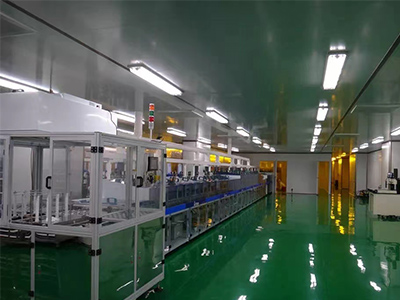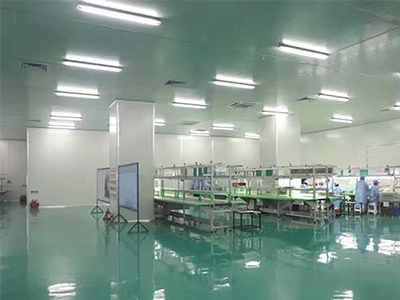COMPANY NEWS
Clean room/clean workshop: clean level classification and level standards
The development of dust-free workshops is closely linked to modern industry and cutting-edge technology. At present, it has been widely used and matured in industries such as biopharmaceuticals, medical and health care, food and daily chemicals, electronic optics, energy, and precision instruments.
Air cleanliness class: A grade standard for dividing the maximum concentration limit of particles greater than or equal to the particle size considered in a unit volume of air in a clean space. Domestically, dust-free workshops are tested and accepted in an empty, static, and dynamic state, by the "GB50073-2013 Cleanroom Design Specifications" and "GB50591-2010 Cleanroom Construction and Acceptance Specifications".
The continuous stability of cleanliness and pollution control is the core standard for testing the quality of dust-free workshops. This standard is divided into several levels, including regional environment and cleanliness. Commonly used are international standards and domestic regional industry standards.
ISO14644-1 International Standard - Air Cleanliness Classification
| Air cleanliness level(N) | Maximum concentration limit of particles greater than or equal to the marked particle size (number of air particles/cubic meter) | |||||
| 0.1μm | 0.2μm | 0.3μm | 0.5μm | 1.0μm | 5.0μm | |
| ISO Class 1 | 10 | 2 | ||||
| ISO Class 2 | 100 | 24 | 10 | 4 | ||
| ISO Class 3 | 1000 | 237 | 102 | 35 | 8 | |
| ISO Class 4 | 10000 | 2370 | 1020 | 352 | 83 | |
| ISO Class 5 | 100,000 | 23,700 | 10,200 | 3,520 | 832 | 29 |
| ISO Class 6 | 1,000,000 | 237,000 | 102,000 | 35,200 | 8,320 | 293 |
| ISO Class 7 | 352,000 | 83,200 | 2,390 | |||
| ISO Class 8 | 3520,000 | 832,000 | 29,300 | |||
| ISO Class 9 | 35,200,000 | 8,320,000 | 293,000 | |||
| Note: Due to the uncertainty involved in the measurement process, no more than three significant concentration figures are required to determine the grade level. | ||||||
Comparison table of cleanliness levels in different countries
|
Pcs / M ≥0.5um |
ISO14644-1(1999) |
US209E(1992) |
US209D(1988) |
EECcGMP(1989) |
FRANCE AFNOR(1981) |
GERMANY VDI 2083 |
JAPAN JAOA(1989) |
|
1 |
- |
- |
- |
- |
- |
- |
- |
|
3.5 |
2 |
- |
- |
- |
- |
0 |
2 |
|
10.0 |
- |
M1 |
- |
- |
- |
- |
- |
|
35.3 |
3 |
M1.5 |
1 |
- |
- |
1 |
3 |
|
100 |
- |
M2 |
- |
- |
- |
- |
- |
|
353 |
4 |
M2.5 |
10 |
- |
- |
2 |
4 |
|
1,000 |
- |
M3 |
- |
- |
- |
- |
- |
|
3,530 |
5 |
M3.5 |
100 |
A+B |
4,000 |
3 |
5 |
|
10,000 |
- |
M4 |
- |
- |
- |
- |
- |
|
35,300 |
6 |
M4.5 |
1,000 |
1,000 |
- |
4 |
6 |
|
100,000 |
- |
M5 |
- |
- |
- |
- |
- |
|
353,000 |
7 |
M5.5 |
10,000 |
C |
400,000 |
5 |
7 |
|
1,000,000 |
- |
M6 |
- |
- |
- |
- |
- |
|
3,530,000 |
8 |
M6.5 |
100,000 |
D |
4,000,000 |
6 |
8 |
|
10,000,000 |
- |
M7 |
- |
- |
- |
- |
- |
Cleanroom (clean room) grade description
First, the grade definition model is as follows:
Class X (at Y μm)
Where X is the grade of the cleanroom, such as 100 or 10000, etc., and Y is the particle size such as 0.2μm, 0.5μm, etc., which can be selected. This means that the user stipulates that the particle content of the cleanroom must meet the limit of the grade at these particle sizes. This can reduce disputes. Here are a few examples:
Class1 (0.1μm, 0.2μm, 0.5μm)
Class 100(0.2μm, 0.5μm)
Class 100(0.1μm, 0.2μm, 0.5μm)
In Classes 100 (M3.5) and Greater (Class 100, 1000, 10000....), generally one particle size is sufficient. In Classes Less than 100 (M3.5) (Class 10, 1....), it is generally necessary to look at several more particle sizes.
The second trick is to specify the state of the clean room, for example:
Class X (at Y μm), At-rest
The supplier knows very well that the clean room must be accepted in the At-rest state.
The third trick is to customize the upper limit of particle concentration. Generally, the clean room is very clean when it is As-built, and it is not easy to test the particle control ability. At this time, you can simply lower the upper limit of acceptance, for example:
Class 10000 (0.3 μm <= 10000), As-built
Class 10000 (0.5 μm <= 1000), As-built
This aims to ensure that the clean room still has sufficient particle control ability when it is in the Operational state.
Semiconductor industry clean room case gallery
- Most of the yellow light workshops are built in Class 100 clean areas, and Class 1000 clean areas are also involved.
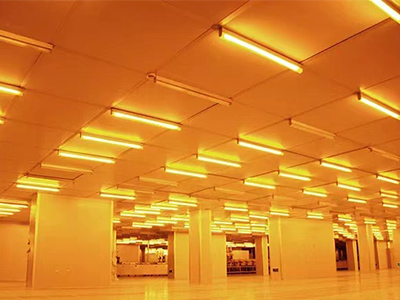
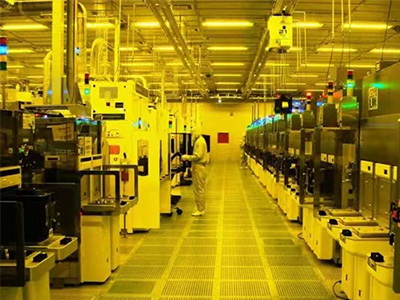
- Semiconductor clean rooms (raised floors) are often used in Class 100 and Class 1000 areas
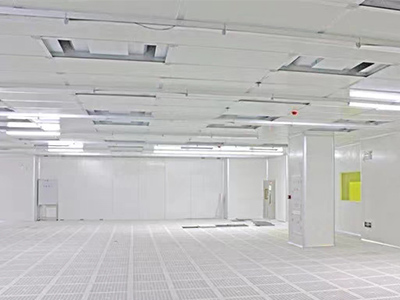
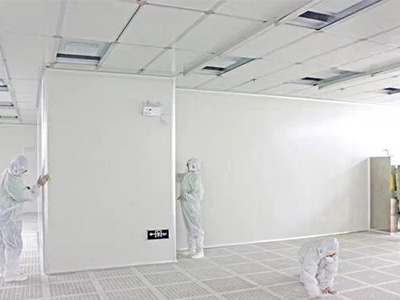
3. Conventional semiconductor clean room (clean area: Class 10,000 to Class 100,000
